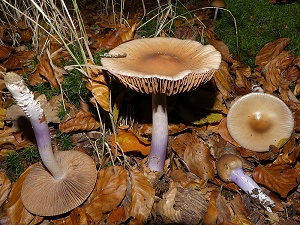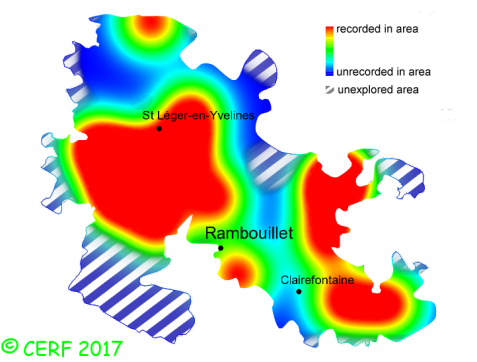| Cortinarius elatior Fr. |
|
|
|
|
|
|
The cap is brown to straw yellow, with a central umbo. The cap surface is smooth, viscid or sticky. The stem is violaceous white to ochre, without ring, with a cortina. The flesh is white, unchanging; its taste is mild; the odour is faint; its texture is fibrous. The gills are ochre then rusty red, adnate, distant . The spore print is rusty brown. This species is mycorrhizal. It grows on the ground, on a rather acid soil, with beech. The fruiting period takes place from July to November.
Distinctive features : Red-brown to ochre yellow cap, with large umbo and radially wrinkled; stem and cap viscid; stem thinner at both ends, striate near top, whitish with blueish tinge under the cortina when young; veined gills, with white edge; Cortinarius elatior is infrequent and widely present in the forest of Rambouillet, and is frequent, more generally speaking . | ||
|
page updated on 14/01/18

